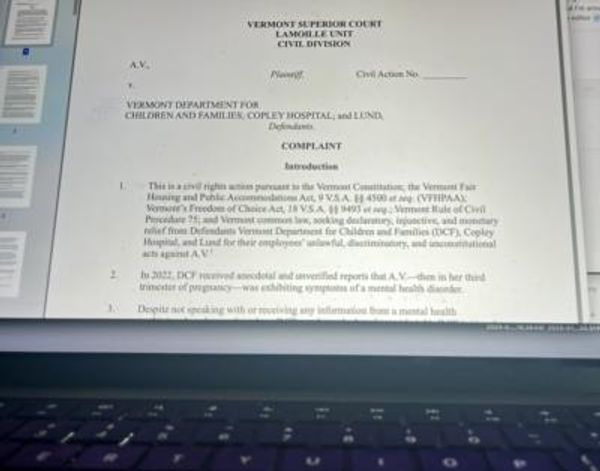
Spreadable butter comes in recyclable plastic tubs – but does recyclable mean the same as destined for recycling?
A plastic lid, then a foil seal, then a paper cover, then the butter.
It might seem a long way to dig before reaching New Zealand’s staple spread. Especially when compared with the classic method of wrapping butter in waxed paper.
It has become the norm for hot-filled margarines and spreadable butters to be packaged in plastic tubs, with several layers of wrapping raising the eyebrows of foodies and greenies alike.

Greenpeace lead agriculture campaigner Christine Rose called the many-layered lids an unneeded contribution to plastic pollution.
“This is more unnecessary single use packaging that will add to the plastic pollution crisis,” she said. “It is doubly galling that it comes from the biggest polluting industry in the country – intensive dairy – which is polluting our climate and contaminating rural drinking water with potentially carcinogenic nitrates.”
While the seemingly excessive packaging of certain products in our refrigerators and pantries may be testament to a world where wanton consumption is piling landfills high, they also tell the tale of food producers trying to strike a difficult balance between food security and meeting industry sustainability targets.
The packaging overkill goes back to 2007, when Cuisine magazine reported complaints that paper-wrapped NZ butter was often "rancid" when it reached consumers, and drew unfavourable comparisons with foil-wrapped imports such as Lurpak. Seemingly, Fonterra over-corrected with its layers and layers of packaging.
So is there a way to maintain food quality and security while reducing the amount of plastic and carbon used per capita?
Fonterra, which manufactures soft butters in tubs through subsidiary Mainland, has committed to a goal of 100 percent reusable, recyclable or compostable packaging by 2025, with zero solid waste sent to landfill.
Eddie Szopa, head of packaging development and innovation at Fonterra said a focus on sustainability is a key strategic priority for the diary giant.
“We’re in the process of evaluating all our globally used packaging materials and taking action where needed to make them recycle-ready by 2025. We’re currently trialling alternate material options and looking at potential redesigns where needed,” he said.
According to Fonterra’s latest sustainability report, 87 percent of the company’s consumer products were made of recycle-ready materials in the financial year of 2020.
That doesn’t mean it all gets recycled. According to ANZPAC plastic pact, 41 percent of recyclable plastic containers in New Zealand are sent to landfill.
For the butter tubs, they are made with a rigid plastic that can withstand the high temperatures of the filling process. This plastic is called polypropylene, and it is recyclable.
“Unlike regular block-butter, spreadable butters are semi-solids so need to be packaged with a rigid material like a polypropylene tub and resealable lid,” Szopa said. “This contains and protects them during their shelf life – before and after opening. The polypropylene tubs we use are recyclable at kerbside.”
More than that, they are valuable. According to Plastic NZ, polypropylene is a highly recyclable and sought after material in New Zealand, with many manufacturers trying to secure more New Zealand-recycled polypropylene rather than having to import it.
Nevertheless, there is still polypropylene being sold offshore in mixed bales and sent to landfill.
Plastic NZ has put together a national working group to “close the loop” on this kind of plastic. However, there are still eight councils that don’t recycle polypropylene, and therefore don’t recycle your spreadable butter tubs.
These are Waitomo, Ōtorohanga, South Waikato, Whakatane, Kawerau, Porirua, Gore and the Chatham Islands – mainly rural councils which all together only make up about 3 percent of New Zealand’s population.

Just because the Council is willing to collect your butter tubs doesn’t mean they end up in the right place to be recycled.
According to the plastic working group, every year between 8,000 and 10,000 tonnes of post-consumer polypropylene enters the kerbside waste and recycling stream – with just 15 percent of it ultimately being reprocessed in country.
Rob Langford is chief executive of the Packaging Forum, an organisation representing the packaging industry.
He said a cautious approach was needed so as not to throw the plastic out with the bathwater.
“New Zealand’s regulatory framework is moving at a pace where aren’t going to create unintended consequences,” he said. “Plastics might be going offshore for recycling, but that’s better than them going to landfill in New Zealand.”
He said a sudden move like a ban of recyclable waste being shipped overseas for processing could have the effect of filling onshore landfills more quickly.
“Ultimately, our view is where possible, we should always create solutions onshore where we can,” he said.
But at the moment, according to the Plastics NZ report, a large amount of polypropylene is falling through the cracks. The group reported over two thirds of post-consumer recycled polypropylene scrap ending up in landfill, 50 percent directly and 17 percent due to contamination.
The remaining 18 percent is exported, which the reports says is a loss of between $8.45 million and $14.9 million of potential value ending up in landfill or overseas.
There is an upward trend in the amount of polypropylene recycling available to Kiwis, with access increased to a further 17 percent of the population just last year.
When it comes to butter, the tubs may be better for the environment than the classic paper-wrapped variety.
According to packaging consultant Nikki Withington of Square One, the paper and foil lids used with the tubs are currently not recyclable – but neither is the paper used to wrap butter blocks.
She said for companies in New Zealand there’s work to do to convert packaging over to meet the standards set by bodies such as the ANZPAC Plastic Pact. She said moving to elimination, reduction and reusing as opposed to wasting or just recovering is the goal, but it can be a difficult one without the infrastructure, funds, materials innovations or requisite changes in consumer behaviour.
“Another challenge is that in the short term, and perhaps for the medium-long term, most FMCG (fast-moving consumer goods) packaging will have to lean on recycling as the main end of life stream, and how do we ensure that we can close the loop for the unrecyclables?
“If the packaging material is recyclable but there are no end markets available to take and reprocess them … then it becomes problematic. By standardising some materials and banning the problematic ones, this should help build volume in those streams and ensure materials of value have suitable end markets.”







